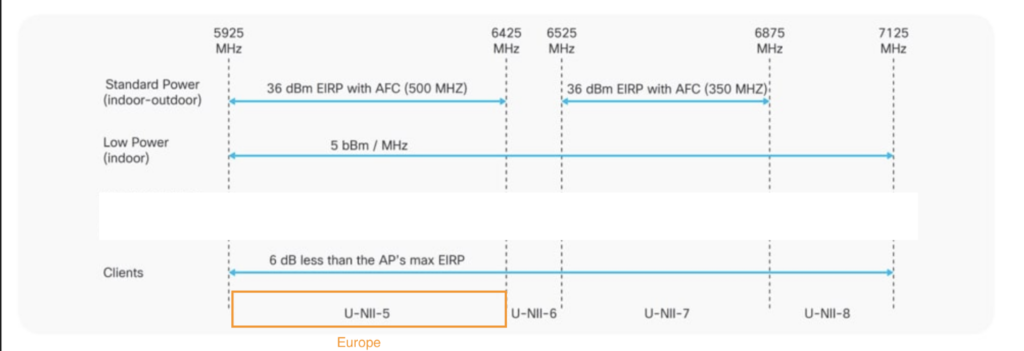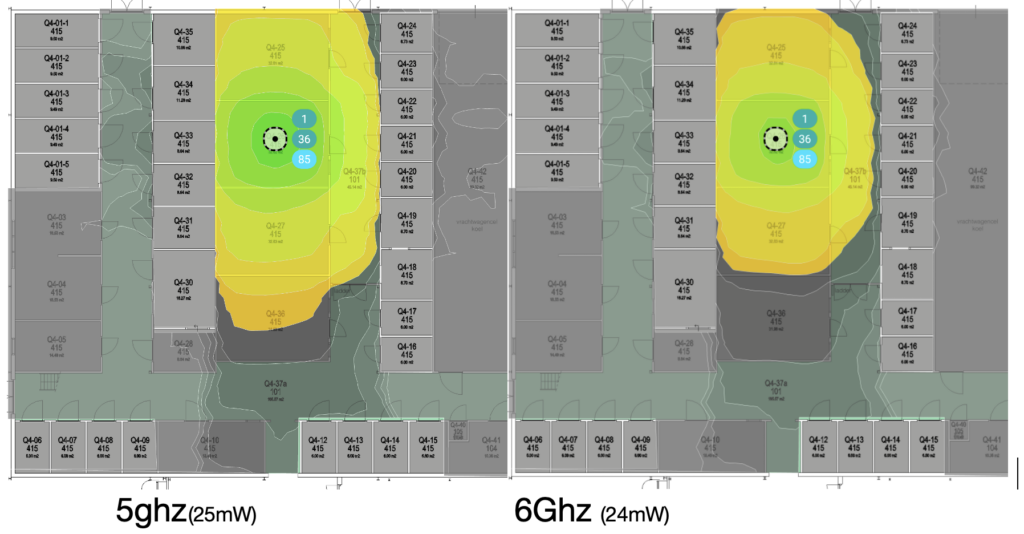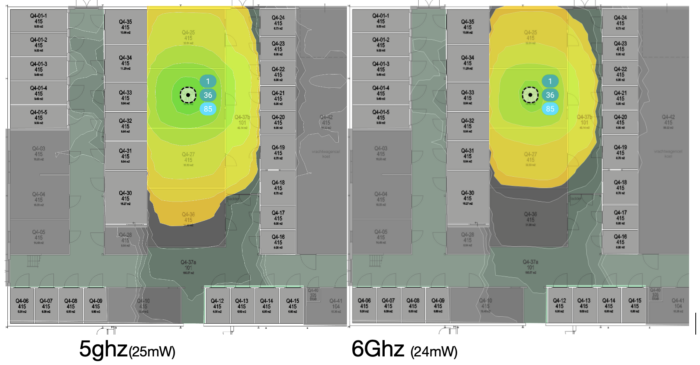Wi-Fi 6e gives us a fresh low noisy floor and 24x 20mhz channels to play with in Europe. Currently, there are classes of Wi-Fi 6e Access Points (APs). There is “Standard Power” and Low Power

Most APs that hit the market in Europe currently only support Low Power AKA LPI (Low Power Indoor). The change in the LPI is that they lowered the PSD (Power Spectral Density) to 5dB per MHz. This will translate to a 20mhz channel it will be an 18dBm allowed power level for the LPI class APs. When you increase the channel width from 20mhz to 40mhz we will double the speed by doing so, but we also lose 3db because the noise floor goes up with 3db. However, what’s interesting in an LPI environment we also double the power (3db). So the SNR (signal-to-noise ratio) stays the same. So when we increase the channel width by going up from 20mhz to 40mhz and 80mhz and even 160mhz (27dBm max) we lose nothing the SNR stays the same. Have fun rolling out WiFi6e networks.
To model the propagation accurately, the power was reduced by 1mW to compensate for 6 GHz propagation loss.

